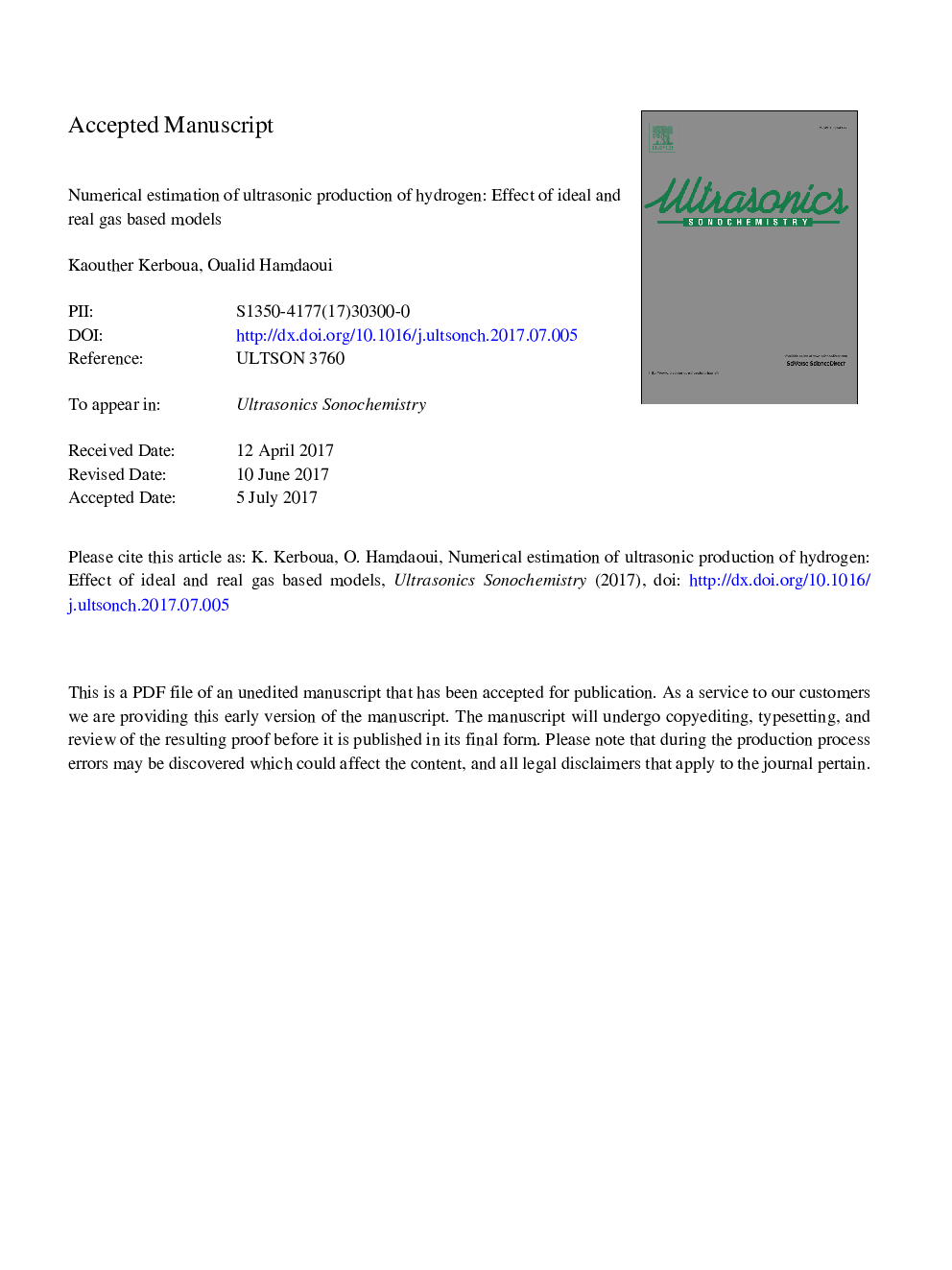| Article ID | Journal | Published Year | Pages | File Type |
|---|---|---|---|---|
| 5144442 | Ultrasonics Sonochemistry | 2018 | 26 Pages |
Abstract
Based on two different assumptions regarding the equation describing the state of the gases within an acoustic cavitation bubble, this paper studies the sonochemical production of hydrogen, through two numerical models treating the evolution of a chemical mechanism within a single bubble saturated with oxygen during an oscillation cycle in water. The first approach is built on an ideal gas model, while the second one is founded on Van der Waals equation, and the main objective was to analyze the effect of the considered state equation on the ultrasonic hydrogen production retrieved by simulation under various operating conditions. The obtained results show that even when the second approach gives higher values of temperature, pressure and total free radicals production, yield of hydrogen does not follow the same trend. When comparing the results released by both models regarding hydrogen production, it was noticed that the ratio of the molar amount of hydrogen is frequency and acoustic amplitude dependent. The use of Van der Waals equation leads to higher quantities of hydrogen under low acoustic amplitude and high frequencies, while employing ideal gas law based model gains the upper hand regarding hydrogen production at low frequencies and high acoustic amplitudes.
Related Topics
Physical Sciences and Engineering
Chemistry
Chemistry (General)
Authors
Kaouther Kerboua, Oualid Hamdaoui,
